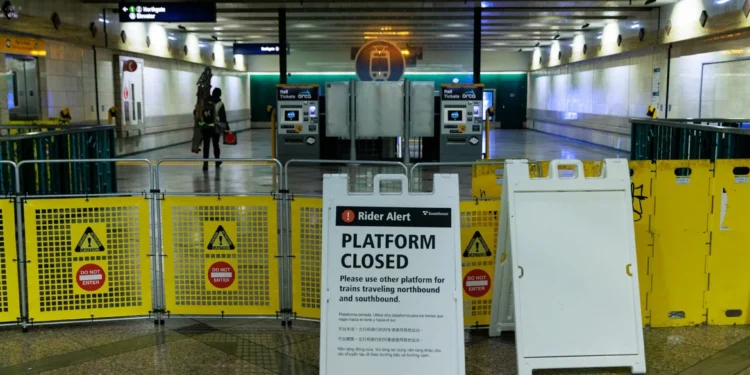Sound Transit’s light rail system experienced its second major service disruption in three days Saturday when ventilation equipment failures at University of Washington Station forced passengers onto replacement buses between University District and Westlake stations.
The latest incident occurred during overnight testing when fans at the University of Washington Station “were not functioning as intended,” according to Sound Transit officials. The equipment is integral to emergency fire safety systems, requiring tunnel closures when malfunctioning to ensure passenger safety.
A Sound Transit spokesperson emphasized that “at no point was any person in our system in danger” during the ventilation system failure that prompted the service suspension.
The disruption created significant inconvenience for Saturday riders, with passengers forced to disembark trains and seek alternative transportation. At Capitol Hill Station, crowds scrambled to find alternate routes as the service interruption unfolded.
“Sometimes you just kind of find out by surprise, oops, we’re here, things aren’t necessarily running as they should be,” said Nat Desjardins, a rider at Capitol Hill Station who encountered the unexpected service change.
The University of Washington incident follows a similar ventilation system failure at Beacon Hill Station earlier this year, where power supply interruptions affected the fan system. Sound Transit officials are conducting root cause analysis of both incidents to prevent future occurrences.
The ventilation fans serve a critical safety function, designed to remove smoke during fire emergencies and provide passengers time to evacuate tunnels safely. Fire code requirements mandate the equipment’s proper operation before allowing passenger access to underground sections.
Riders expressed frustration with the frequency of recent disruptions while acknowledging safety priorities. “I was a little annoyed that it’s happening so frequently, but if they have issues and it’s a safety thing, it is what it is,” one passenger stated. “It would be great if they could communicate more about these things that they’re doing to fix it.”
The repeated ventilation system problems raise questions about maintenance protocols and equipment reliability across Sound Transit’s light rail infrastructure. The agency operates extensive underground tunnel sections that require functioning ventilation systems to meet safety standards.
Sound Transit has not provided specific timelines for completing the root cause analysis or implementing preventive measures to address the recurring ventilation equipment failures affecting multiple stations.
The service disruptions highlight the complex safety requirements for underground rail systems and the operational challenges when critical safety equipment malfunctions, even during routine testing periods.







